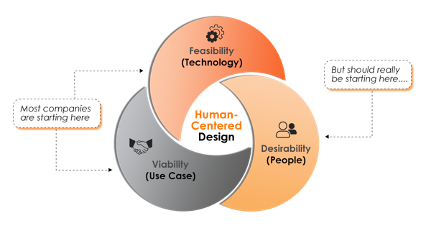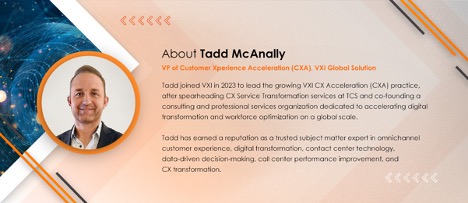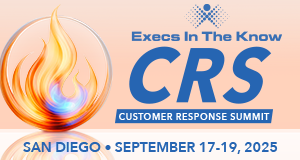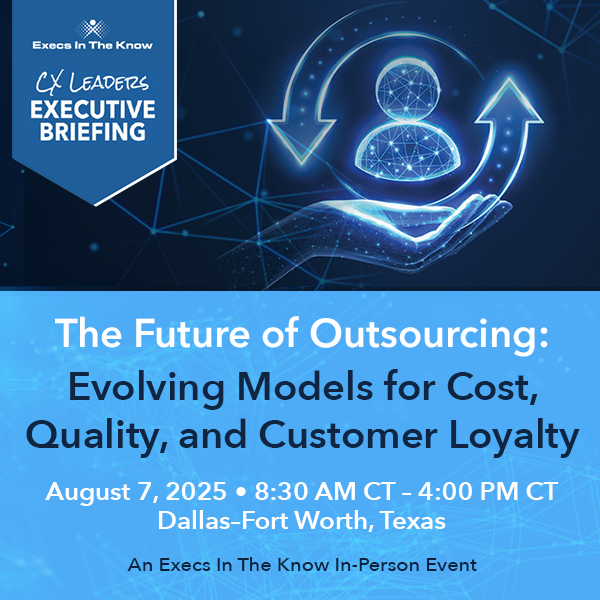Humor me for a second, and imagine your company is Homer’s Odysseus. And if customer experience (CX) transformation is your odyssey, it would serve you well to remember that the journey, if not carefully navigated, can be fraught with tunnel-visioned Cyclops, time-eating Lotus Eaters, and the seductive Siren calls of newly hyped technologies. Today, staying “current” and on course can feel overwhelming.
Does that mean the quest for improved CX isn’t worthwhile? Of course not. But it does mean that as you transform, it’s crucial to anticipate the unintended consequences, and like Odysseus, be prepared to traverse uncharted waters with the help of external partners.
Most CX teams today have limited manpower to spare, which is why keeping focused on what matters the most — the needs, preferences, and emotions of your customers and employees can help you avoid potential pitfalls along the way.
Navigating Uncertainty with Human-Centered Design
In a world where change is relentless and technology investments often outpace organizational readiness, uncertainty in our space looms large. Many CX leaders are left wondering how to innovate — in the right ways — when capabilities and expectations are changing so often and so fast.
Chances are, your organization is feeling the pressure to keep pace, while taking part in an intricate balancing act between efficiency (how can I reduce the cost of my operations) and experience (how can I improve customer satisfaction and loyalty).
That’s where human-centered design comes in. It serves as a bridge between what people truly need, the vast potential of technology, and the requirements for success. Put simply, it’s an approach that prioritizes users’ needs, behaviors, and preferences, ensuring solutions (and service capabilities) resonate and deliver value.

But what’s presented above is not simply a design concept; it’s a control mechanism to ensure your transformational roadmap is steering your lean teams in the right direction while mitigating risks. And without it, your business may face one or more of the following unintended consequences.
Unintended Consequence #1: Technology Waste
Nearly a third of SaaS spending is going to waste within the average company, according to one study by Vertice. This occurs when companies invest in new technologies but fail to fully utilize their capabilities due to operational silos, skill gaps, broken processes, or inadequate training to integrate new capabilities into existing workflows.
Example: A multinational corporation invested heavily in a social media management platform for its marketing team without considering the use cases and needs of its frontline customer care staff. As a result, the system was underutilized, and redundant capabilities were procured, leading to wasted resources and missed opportunities for improved customer engagement.
Solution: Before even signing up for a software trial, map your processes and conduct user research to identify pain points and preferences. Best-in-suite technologies can break down the silos between customer service and marketing and highlight areas for cross-functional collaboration while unifying the customer experience.
When you involve your frontline staff and end-users in the decision-making process, you can ensure that the technologies you invest in will align with actual user needs, thereby reducing waste and maximizing ROI.
Unintended Consequence #2: Increased Complexity (for Agents & Customers)
Introducing new technologies without taking a “test-and-learn” approach can lead to increased complexity, frustration, and reduced satisfaction. Consider the employee experience. Contact center agents are tasked with learning seven tools, on average, to do their job well. This demand often leads to heightened burnout and attrition, resulting in higher operating costs for customer service departments — already under pressure to do more with less.
Example: A technology company implemented asynchronous messaging to improve productivity and cut costs but failed to capture Voice of the Employee (VoE) feedback before scaling it across its service delivery network. Performance and morale declined as agents struggled to navigate between chat windows and messaging threads. Tickets were closed prematurely, and technical issues and limitations became fires for agents to put out, instead of issues that could have been proactively addressed in the initial design and prototype.
Solution: Human-centric design lives and dies by user feedback. By getting input from agents throughout your CX transformation, you can continuously identify pain points, usability issues, and areas for process reengineering and automation.
Unintended Consequence #3: Negligent Misinformation
Many AI-powered systems, such as chatbots, may inadvertently provide inaccurate or misleading information, leading to diminished customer trust and satisfaction.
Example: Last year, Air Canada announced its new AI-enabled customer support chatbots. When one customer interacted with the bot to seek information on a bereavement rate for a flight, the chatbot conjured a response inconsistent with the airline’s policy. The airline, however, refused to honor the information given by the chatbot. The customer sued Air Canada, and won, citing negligent misrepresentation.
Solution: AI’s success hinges on human-centered design. Don’t forget to regularly test and validate your AI algorithms, maintaining accountability with feedback loops and human oversight to safeguard customer trust and satisfaction.
Unintended Consequence #4: Decreased Human Interaction
While CX transformation aims to streamline processes and optimize costs, over-automation can backfire on an organization — creating more problems than solutions.
Example: Frontier Airlines sought to modernize its delivery model and cut costs by replacing voice support with chatbots and self-help automation. However, their abrupt implementation led to a wave of negative reactions from frustrated passengers unable to get the assistance they needed. Rather than enhancing the customer experience, the move backfired, resulting in increased complaints and dissatisfaction. Moreover, its chatbot was rudimentary and failed to leverage advanced conversational AI, providing generic responses instead of addressing individual queries effectively.
Solution: Human-centered design ensures that automation complements, rather than replaces, human interaction. By preserving empathy and emotional connection in customer interactions, it maintains the integrity of the customer experience through a “test-and-learn” approach vs. Frontier’s abrupt switch.
Unintended Consequence #5: Impacts to Marginalized Communities
CX transformation efforts may inadvertently overlook certain customer or employee groups, including those with disabilities, limited access to technology, or those in occupations with high automation potential.
Example: A McKinsey report found that 24% of all Black workers work in occupations with greater than 75% automation potential. And while generative AI can optimize costs and increase profitability, it can also widen the racial wealth gap without careful thought and consideration.
Solution: Integrate human-centric design principles to prioritize inclusivity and accessibility. When you actively involve diverse user groups and suppliers in your processes and test them for wide-ranging accessibility, you can ensure your CX initiatives cater to all customers. The best part? AI can help with this. Leveraging AI in training and upskilling programs can boost graduation rates and create opportunities for upward mobility, fostering greater equity within organizations.
Unintended Consequence #6: Data Privacy & Cybersecurity Risks
CX transformation often involves collecting vast amounts of customer data for personalization purposes. But this can also raise privacy concerns if not handled carefully.
Example: In 2017, Equifax — one of the three major credit reporting agencies — was attacked and had the personal data of 147 million Americans exposed. One of the biggest contributing factors to the breach was a missed patch, which was overlooked through the company’s automated scanning process.
Solution: Adopting a human-centered design approach prioritizes transparency and user control over data collection and usage. This not only fosters trust with customers and employees but also ensures compliance with regulatory requirements, safeguarding against potential breaches.
The Arrival Home
Like Odysseus navigating the treacherous waters of his own odyssey, embarking on a journey toward CX transformation requires foresight, resilience, and strategic navigation. So, as your teams chart your own course home, remember that beyond the allure of technological advancements lies the heartbeat of any organization — its people. By placing human needs and experiences at the forefront, we can bridge the gap between innovation and user satisfaction, ensuring that our odyssey toward greater CX maturity isn’t just a voyage, but a triumph of empathy and understanding.
Join me on March 14 at the Customer Response Summit in Tucson, AZ, as we delve deeper into this topic, covering strategies for “Modernizing Your Service Delivery Model Without Losing the Human Connection.” As VXI’s VP of CX Acceleration Services, I’ll be leading the way, as we explore how human-centered design can illuminate your path forward.
Need help navigating your CX transformation journey? Contact us to speak with our CX Accelerate team today.































